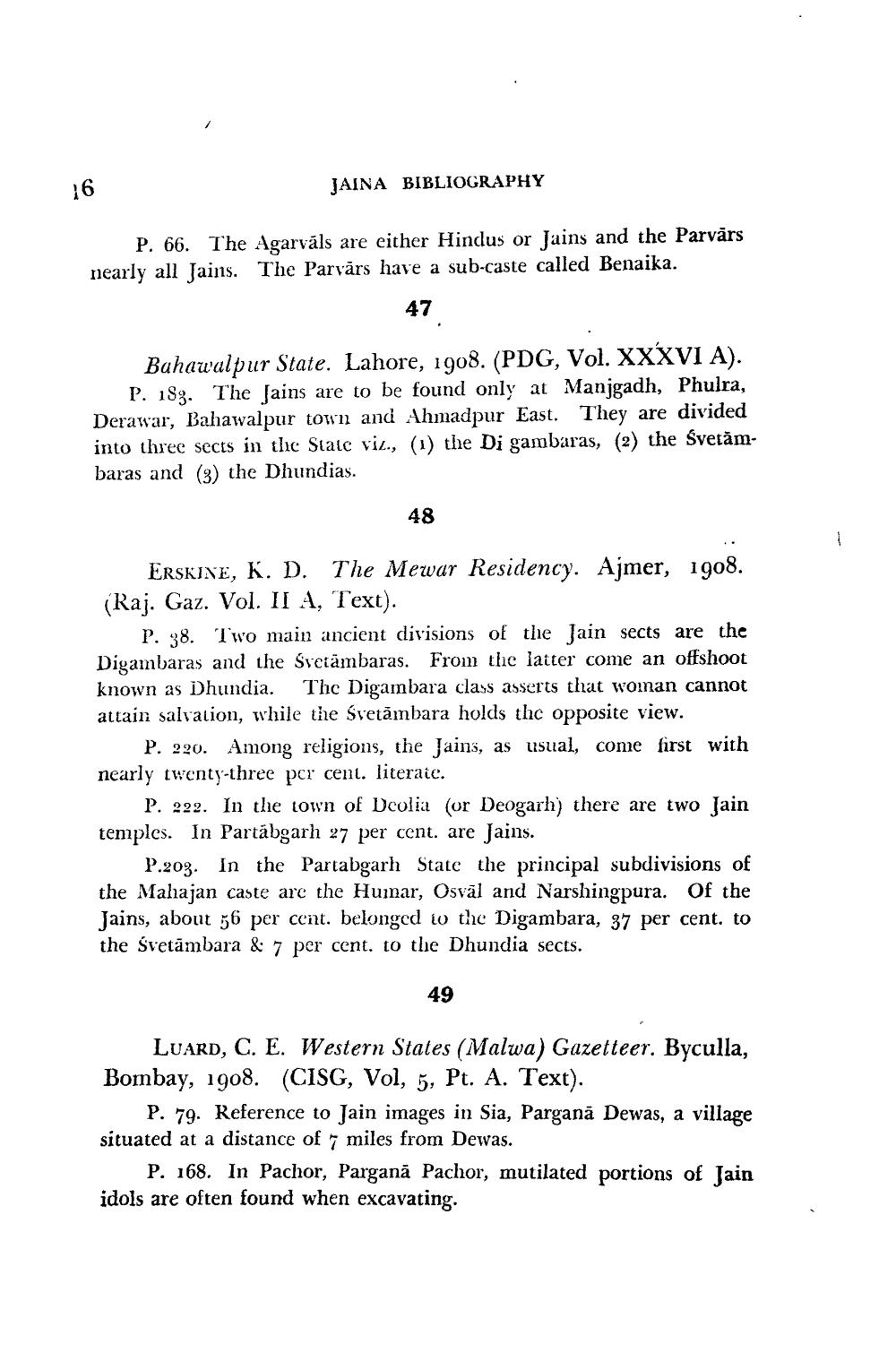________________
16
JAINA BIBLIOGRAPHY
P. 66. The Agarvāls are either Hindus or Jains and the Parvārs nearly all Jains. The Parvārs have a sub-caste called Benaika.
47
Bahawalpur State. Lahore, 1908. (PDG, Vol. XXXVI A).
P. 183. The fains are to be found only at Manigadh, Phulra, Derawar, Bahawalpur town and Ahmadpur East. They are divided into three sects in the State vil., (1) the Di gambaras, (2) the Svetāmbaras and (3) the Dhundias.
48
ERSKINE, K. D. The Mewar Residency. Ajmer, 1908. (Raj. Gaz. Vol. II A, Text).
P. 38. Two main ancient divisions of the Jain sects are the Digambaras and the Svetämbaras. From the latter come an offshoot known as Dhundia. The Digambara class asserts that woman cannot attain salvation, while the Svetămbara holds thc opposite view.
P. 220. Among religions, the Jains, as usual, come first with nearly twenty-three per cent. literaie.
P. 222. In the town of Dcolia (or Deogarh) there are two Jain temples. In Partäbgarh 27 per cent. are Jains.
P.203. In the Partabgarh State the principal subdivisions of the Mahajan caste are the Humar, Osval and Narshingpura. Of the Jains, about 56 per cent. belonged to the Digambara, 37 per cent. to the svetāmbara & 7 per cent. to the Dhundia sects.
49
LUARD, C. E. Western States (Malwa) Gazetteer. Byculla, Bombay, 1908. (CISG, Vol, 5, Pt. A. Text).
P. 79. Reference to Jain images in Sia, Parganā Dewas, a village situated at a distance of 7 miles from Dewas.
P. 168. In Pachor, Parganā Pachor, mutilated portions of Jain idols are often found when excavating.




